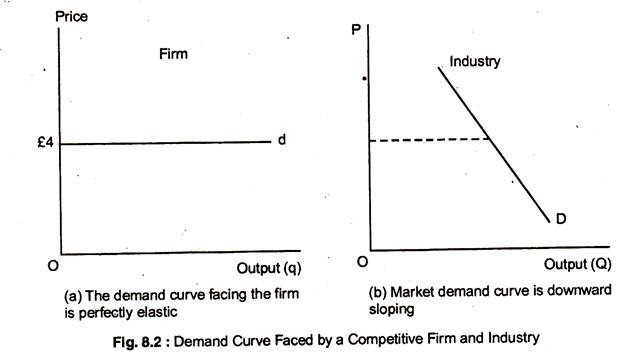Let us make an in-depth study of the demand and marginal revenue for a competitive firm.
Since in a competitive industry, each firm sells only a small fraction of the entire industry sales, how much output the firm decides to sell will have no effect on the market price.
The market price is determined by the industry demand and supply curves. Thus, the competitive firm is a price-taker.The firm’s production will have no effect on the price of the product. Often we will want to distinguish between market demand curves and the demand curves that individual firm faces.
Because the firm is a price-taker, the demand curve, d; facing an individual firm is given by a horizontal line. Fig. 8.2(a) shows individual firm’s demand curve at a price of £4 per bushel of wheat. The vertical axis measures price and the horizontal axis measures output of wheat.
ADVERTISEMENTS:
Compare the demand curve facing the firm in Fig. 8.2(a), with the market demand curve in Fig. 8.2(b). The market demand curve, D, shows how much wheat all consumers will buy at each possible price.
The market demand curve is downward-sloping because consumers buy more wheat at a lower price. The demand curve, d, facing the firm is horizontal because the firm’s sales will have no effect on the price. Price is determined by the interaction of all firms and consumers in the market, not by the output decision of a single firm.
The demand curve, d, facing an individual firm in a competitive market is both its average revenue curve and its marginal revenue curve. Along this demand curve, marginal revenue and price is equal.
